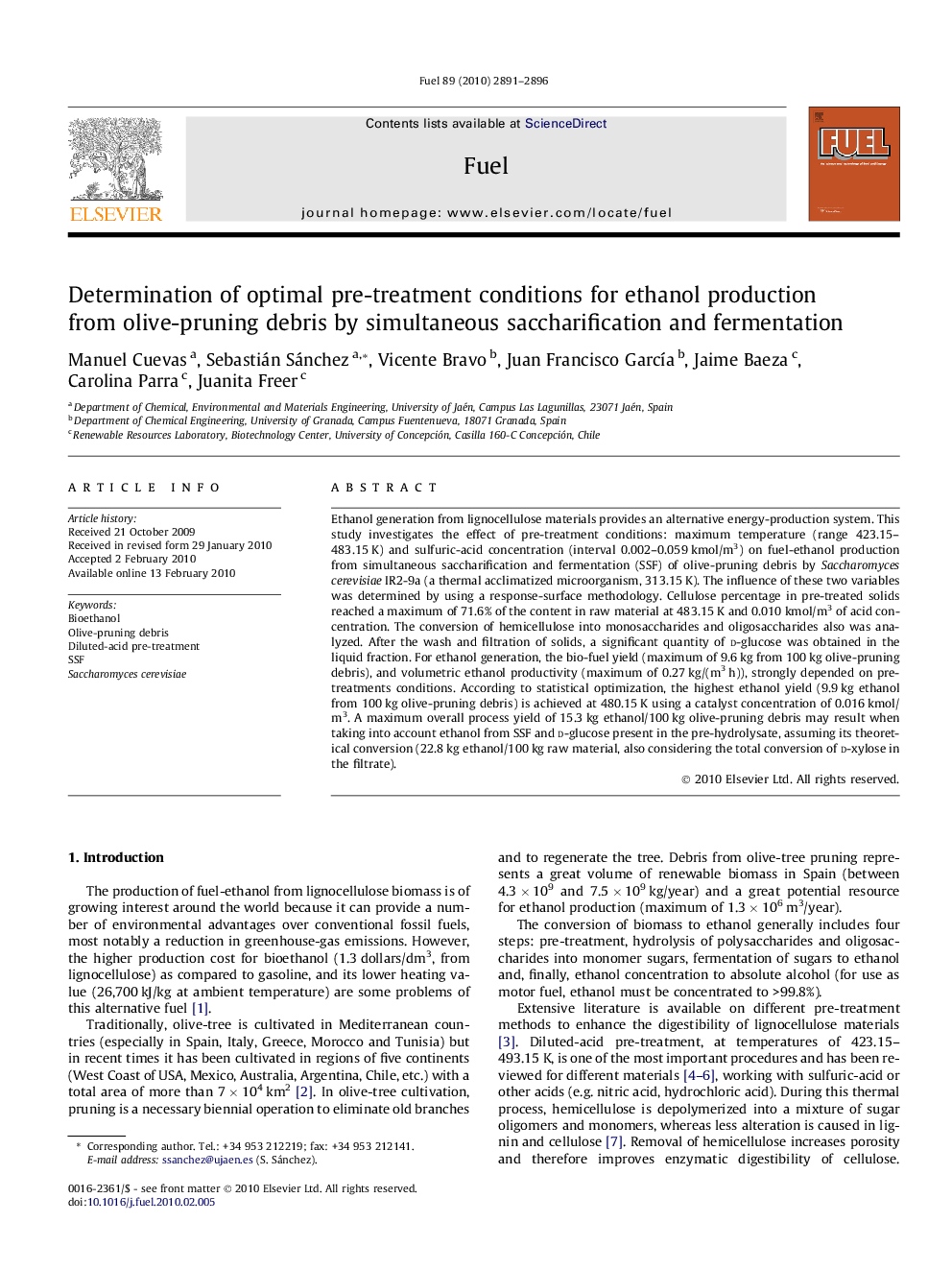| Article ID | Journal | Published Year | Pages | File Type |
|---|---|---|---|---|
| 206554 | Fuel | 2010 | 6 Pages |
Ethanol generation from lignocellulose materials provides an alternative energy-production system. This study investigates the effect of pre-treatment conditions: maximum temperature (range 423.15–483.15 K) and sulfuric-acid concentration (interval 0.002–0.059 kmol/m3) on fuel-ethanol production from simultaneous saccharification and fermentation (SSF) of olive-pruning debris by Saccharomyces cerevisiae IR2-9a (a thermal acclimatized microorganism, 313.15 K). The influence of these two variables was determined by using a response-surface methodology. Cellulose percentage in pre-treated solids reached a maximum of 71.6% of the content in raw material at 483.15 K and 0.010 kmol/m3 of acid concentration. The conversion of hemicellulose into monosaccharides and oligosaccharides also was analyzed. After the wash and filtration of solids, a significant quantity of d-glucose was obtained in the liquid fraction. For ethanol generation, the bio-fuel yield (maximum of 9.6 kg from 100 kg olive-pruning debris), and volumetric ethanol productivity (maximum of 0.27 kg/(m3 h)), strongly depended on pre-treatments conditions. According to statistical optimization, the highest ethanol yield (9.9 kg ethanol from 100 kg olive-pruning debris) is achieved at 480.15 K using a catalyst concentration of 0.016 kmol/m3. A maximum overall process yield of 15.3 kg ethanol/100 kg olive-pruning debris may result when taking into account ethanol from SSF and d-glucose present in the pre-hydrolysate, assuming its theoretical conversion (22.8 kg ethanol/100 kg raw material, also considering the total conversion of d-xylose in the filtrate).
